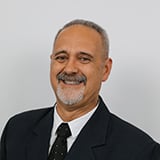I have said this before, and I will not shy away from saying it again, “being a teacher is not an easy job”.
The Daily Telegraph has recently quoted data from the AITSL Australian Teacher Workforce Data in this article: NSW schools: Stress and burnout pushes thousands of teachers to think about quitting.
There is no doubt that many teachers are feeling very much under the pump due to increasing compliance burdens from within their schools and external regulators, increased community expectations, the changing and ever-increasing complexity and volume of the curriculum and, above all, pressure from having to deal with more and more behavioural issues from their students, especially after periods of lockdown.
This is a known fact - there is a shortage of teachers. A very quick Google Search found dozens of recent articles that provide further evidence that Australia, along with many other countries, is experiencing a very real teacher shortage and that this will be exacerbated by teachers leaving the teaching profession due to dissatisfaction. The numbers that are nearing retirement, or who are looking elsewhere for less stressful work (or even just fewer hours of work), are simply not being replaced in sufficient numbers by new graduates or mature professionals who want to work in this valuable profession.
Anecdotal conversations with school principals indicate that retaining good quality teaching staff is clearly the best way to move forward. Of course, there will always be staff who want to move to leadership positions or transition to retirement. But, just as schools invest countless hours in their students, they do the same with their staff. Retaining quality staff means that schools save time and money on recruitment, minimise disruption due to staff changes, and facilitate an ongoing reputation for excellence. Rapid or regular staff turn-around does not help to promote confidence in a school by the parent or the student body.
We all know that staff can be replaced but when a good quality teacher leaves there is also a genuine sense of loss. Replacement staff, once found, require considerable time and energy spent on them to inculcate them into the school’s culture, mission, vision and overall ethos.
Teacher Retention
Salary always seems to be identified by the media as a driving force for teacher retention. However, this is not always the case. According to The Age, starting salaries for teachers range from $60,000 to $79,000. In addition, the final report of Quality Initial Teacher Education Review (noted in The Age article) found that Australian teachers are among the best paid in the world. However, salary growth is flat by global standards – usually topping out at around $100,000 to $105,000 after 10 years.
If teachers want to earn more money, and stay in the profession, they then tend to move on to educational administration and leadership roles, taking them out of the classrooms where they have the most profound personal effect on their students.
The Australian Institute for Teaching and School Leadership (AITSL) encourages teachers to stay in the classroom by promoting career stages such as “Highly Accomplished” or “Lead Teachers”. There is considerable kudos associated with the stages, but they generally do not involve any salary increases. Some states and territories also offer higher salaried positions such as ‘senior teacher’ which are not linked to the AITSL career stages. Has this kept some senior and high-quality teachers in the profession? More than likely, yes.
However, School Governance has argued in the past that, in addition to remuneration incentives, schools should look to address a range of teachers’ needs including, if and where possible, flexible working arrangements, employee entitlements and the creation of a comprehensive professional development program.
Schools should also address areas that aim to support and remove impediments to good performance, such as solid programs relating to employee welfare, stress management, employee assistance programs, and policies and programs to prevent harassment and bullying. Schools that provide a safe, secure, and innovative workplace are more likely to reinvigorate tired or burnt-out teachers and attract talented teachers that are ready to renew their love of the profession.
Teacher Attraction
This quote from The Age says more about why there is a reticence among our young achievers to train as teachers, other than just salary issues:
“When asked why some school-leavers would be deterred from choosing a career in teaching, focus group participants reported that there are perceptions teaching is a low-status career, is not intellectually challenging, and is for ‘less intelligent students’.”
This was also reiterated in a recent article in The West Australian, where the federal shadow education minister, Tanya Plibersek, has vowed to “restore respect for the teaching profession and boost qualification and entry requirements for those studying education”. She noted that people should only be admitted to a teaching degree if they are in the top 30 per cent of high school students.
In February 2022, the Federal Government released its final report into the Quality Initial Teacher Education Review. One of the findings of the Review was that the number of people completing teaching courses overall has dropped 12 percentage points in the last decade with only 52 per cent of students completing their teaching degree.
The Next Steps: Report of the Quality Initial Teacher Education Review focused on how Australian schools can better attract and retain high-quality teachers while also preparing teaching graduates for the classroom. The Expert Panel involved in this review provided 17 recommendations that included:
- a national recruitment campaign that features expert teachers and celebrates the positives of teaching and debunk negative myths
- incentives to be offered to high-achieving school leavers and mid-career professionals, and to people in regional, rural and remote locations, people from Culturally and Linguistically Diverse backgrounds and Aboriginal and Torres Strait Islander peoples, to attract them to teach
- making the profession more attractive to new candidates by removing the burden of red tape from teachers’ workloads.
There is no doubt that these recommendations and the other 14 will be welcomed by school educational bodies, schools and school leaders across the country.
As ex-principal, Robyn Collins, has been quoted as saying:
“One of the greatest professional and moral challenges principals face is to appoint the best teachers for their school. As one former principal I respect very much says, "Which student deserves the mediocre teacher?"”
Conclusion
As a former teacher and school leader, I firmly believe that teaching is one of the most rewarding professions that anyone can undertake, but yes, it is getting harder.
Nonetheless, most teachers will still tell you that they love their work. However, it is difficult to promote this profession to our upcoming young achievers when so much of the media rhetoric is mostly about teachers who want to leave.
Retention and attraction of quality teachers lies in raising the profile of teaching, improving initial teacher training programs, and acknowledging the work, the hours and the stresses associated with teaching by offering support programs and finally, offering remuneration that does not plateau after 10 years.
It is not a ‘quick fix’ or a ‘band aid’ solution that is required. It will involve governments, universities and schools working together to improve the current low cultural perspectives of teaching held by some members of the community and our school leavers, and it needs to happen from all these bodies at the same time-NOW.



